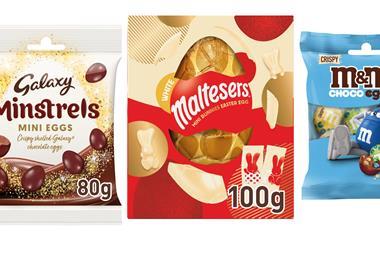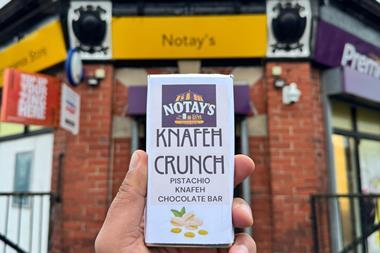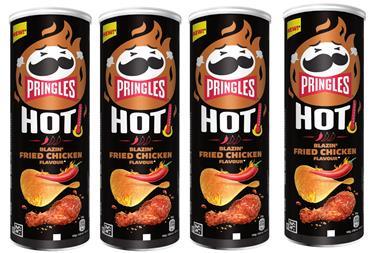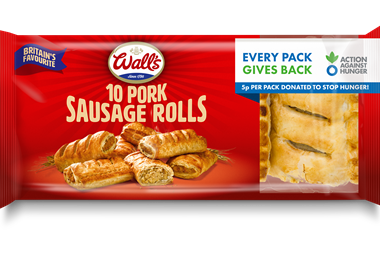As about 70% of chocolate is bought on impulse, the c-store sector is vitally important to the market. But according to Mintel, category management principles are needed in small stores to improve range and merchandising in order to drive growth.
The big three confectionery manufacturers are all keen to advise retailers on merchandising, but just what are they saying?
Masterfoods says its Capital category management system follows a series of principles based on how consumers shop and what they want to buy, rather than just what manufacturers want to sell.
So Capital takes into account the drivers that affect sales of confectionery, including siting, display, range, space and in-store theatre, and applies six principles for retailers to follow: select the right range; put the best-sellers in the best sites; multi-face the best-sellers; group items by product category; allocate space according to sales; and site confectionery in high traffic flow areas.
Cadbury Trebor Bassett (CTB) goes for a colour-coded approach. The company claims research shows that shoppers navigate the fixture firstly by colour and then by brand. So they look for the colour purple then for the Cadbury name. CTB therefore advises retailers to create their own 'purple patch' brand block. Since the relaunch of Cadbury Dairy Milk the entire range is consistent in both colour and design. Cadbury reports that 'purple patch' brand blocking at the heart of the main confectionery display can result in a 16% growth in sales.
To be fair, CTB does offer retailers other advice - for example, it advises them to ensure 100% availability for 100% of the time.
It also recommends merchandising single-serve
New lines are being added to the fiercely competitive chocolate market all the time. Here are some you should definitely make space for.
Already a big hit on the Continent, Côte d'Or from Kraft Foods is now available in the UK. Apparently, the secret behind the brand's special taste is its blend of cocoa beans from West Africa and 'noble beans' from South America.
Now Côte d'Or Experiences Lait Intense and Côte d'Or Experiences Noir 70% 100g tablets are available to the convenience channel with a rrp of £1.29. The launch is supported by a £5.2m media spend at key times throughout 2006.
Kraft Foods channel and communications manager Sarah Petts says: "An increasing number of consumers are trading up from mainstream confectionery products towards those that offer a premium treat which, according to AC Nielsen figures, has caused the premium tablet market to experience massive growth. And this trend is set to continue over the next five years."
The new Cadbury Dairy Milk with Creme Egg bar combines the popular chocolate with the 'goo' from the filled eggs. Cadbury Trebor Bassett head of customer relations Mike Tipping says the new product meets the demands of younger, on-the-go consumers for a convenient, soft-textured chocolate bar.
The 49g bars come in boxes of 48 and have a rrp of 41p.
The launch is supported by a £3m marketing campaign including TV ads, dedicated Coronation Street credits and nationwide sampling.
Guylian is entering the 200g chocolate bar category with three new lines: milk chocolate; milk chocolate & nut; and milk chocolate, raisin & nut. The premium bars come wrapped in gold foil, inside luxury boxes. Rrp is £1.79.
Green & Black's is extending its range into out-of-home consumption with a 35g bar format. Dark 70%, milk, white and maya gold varieties will
all be available in the new size. Rrp is 69p.
The first thing that strikes you about 'Manny' Malvedia's shop is the fact that every customer seems to know his name.
His 990sq ft MS City Stores sits on the Goswell Road in London. Many of his customers either work or study at the two nearby colleges of further education and he says that when they are shut, confectionery sales can fall by as much as 40%. However, as the area is residential and the shop is the only one for five minutes in any direction, sales are good year-round.
Confectionery is an important part of Manny's store, accounting for about 33% of total sales of £8,000 a week. His customers are early birds and confectionery sales start as early as 5.30am, when customers pick up a paper and chocolate bar, then tails off until between 8am and 9am, then again at 11am, building to a peak at 2.15pm.
After a brief respite, the after-school crowd from the school up the road start to drift in at about 3pm, leading to the final rush of commuters on their way home at 5.30pm.
Manny merchandises through Masterfoods and sees the Masterfoods sales consultant Gabrielle Munke about every four weeks. He says that the display he now has - a small display by the till, an aisle display plus two Slimjim and Handibag units - has seen an increase in purchase by about 40%. He even decreased the amount of crisps he displayed as the extra boxes hid his confectionery and disuaded consumers from making purchases.
"We've tried different things like displaying confectionery in the middle of the store before, but it wasn't good," he says.
The Masterfoods method of grouping the categories together works well for him, especially with lunchtime and termtime customers. And he says that he finds having a constant contact with Masterfoods is valuable and helps instil trust.
According to Munke, retailers have to think more like shoppers: "The successful retailer observes how people shop. Retailers try to put more stuff in to increase sales but it often leads to declining sales as they stop the gangways with displays in the way."
She encourages retailers to change things around every so often as this "encourages people to rediscover products". Manny has seen success in repositioning his hang tower next to the National Lottery. "We couldn't sell large bags of bitesize but since putting them there they've done really well."
He estimates that sales of bitesize bags have increased by 23% since repositioning them in September last year.
The big three confectionery manufacturers are all keen to advise retailers on merchandising, but just what are they saying?
Masterfoods says its Capital category management system follows a series of principles based on how consumers shop and what they want to buy, rather than just what manufacturers want to sell.
So Capital takes into account the drivers that affect sales of confectionery, including siting, display, range, space and in-store theatre, and applies six principles for retailers to follow: select the right range; put the best-sellers in the best sites; multi-face the best-sellers; group items by product category; allocate space according to sales; and site confectionery in high traffic flow areas.
Cadbury Trebor Bassett (CTB) goes for a colour-coded approach. The company claims research shows that shoppers navigate the fixture firstly by colour and then by brand. So they look for the colour purple then for the Cadbury name. CTB therefore advises retailers to create their own 'purple patch' brand block. Since the relaunch of Cadbury Dairy Milk the entire range is consistent in both colour and design. Cadbury reports that 'purple patch' brand blocking at the heart of the main confectionery display can result in a 16% growth in sales.
To be fair, CTB does offer retailers other advice - for example, it advises them to ensure 100% availability for 100% of the time.
It also recommends merchandising single-serve
Watch out for......
New lines are being added to the fiercely competitive chocolate market all the time. Here are some you should definitely make space for.
Already a big hit on the Continent, Côte d'Or from Kraft Foods is now available in the UK. Apparently, the secret behind the brand's special taste is its blend of cocoa beans from West Africa and 'noble beans' from South America.
Now Côte d'Or Experiences Lait Intense and Côte d'Or Experiences Noir 70% 100g tablets are available to the convenience channel with a rrp of £1.29. The launch is supported by a £5.2m media spend at key times throughout 2006.
Kraft Foods channel and communications manager Sarah Petts says: "An increasing number of consumers are trading up from mainstream confectionery products towards those that offer a premium treat which, according to AC Nielsen figures, has caused the premium tablet market to experience massive growth. And this trend is set to continue over the next five years."
The new Cadbury Dairy Milk with Creme Egg bar combines the popular chocolate with the 'goo' from the filled eggs. Cadbury Trebor Bassett head of customer relations Mike Tipping says the new product meets the demands of younger, on-the-go consumers for a convenient, soft-textured chocolate bar.
The 49g bars come in boxes of 48 and have a rrp of 41p.
The launch is supported by a £3m marketing campaign including TV ads, dedicated Coronation Street credits and nationwide sampling.
Guylian is entering the 200g chocolate bar category with three new lines: milk chocolate; milk chocolate & nut; and milk chocolate, raisin & nut. The premium bars come wrapped in gold foil, inside luxury boxes. Rrp is £1.79.
Green & Black's is extending its range into out-of-home consumption with a 35g bar format. Dark 70%, milk, white and maya gold varieties will
all be available in the new size. Rrp is 69p.
Retailer's view
The first thing that strikes you about 'Manny' Malvedia's shop is the fact that every customer seems to know his name.
His 990sq ft MS City Stores sits on the Goswell Road in London. Many of his customers either work or study at the two nearby colleges of further education and he says that when they are shut, confectionery sales can fall by as much as 40%. However, as the area is residential and the shop is the only one for five minutes in any direction, sales are good year-round.
Confectionery is an important part of Manny's store, accounting for about 33% of total sales of £8,000 a week. His customers are early birds and confectionery sales start as early as 5.30am, when customers pick up a paper and chocolate bar, then tails off until between 8am and 9am, then again at 11am, building to a peak at 2.15pm.
After a brief respite, the after-school crowd from the school up the road start to drift in at about 3pm, leading to the final rush of commuters on their way home at 5.30pm.
Manny merchandises through Masterfoods and sees the Masterfoods sales consultant Gabrielle Munke about every four weeks. He says that the display he now has - a small display by the till, an aisle display plus two Slimjim and Handibag units - has seen an increase in purchase by about 40%. He even decreased the amount of crisps he displayed as the extra boxes hid his confectionery and disuaded consumers from making purchases.
"We've tried different things like displaying confectionery in the middle of the store before, but it wasn't good," he says.
The Masterfoods method of grouping the categories together works well for him, especially with lunchtime and termtime customers. And he says that he finds having a constant contact with Masterfoods is valuable and helps instil trust.
According to Munke, retailers have to think more like shoppers: "The successful retailer observes how people shop. Retailers try to put more stuff in to increase sales but it often leads to declining sales as they stop the gangways with displays in the way."
She encourages retailers to change things around every so often as this "encourages people to rediscover products". Manny has seen success in repositioning his hang tower next to the National Lottery. "We couldn't sell large bags of bitesize but since putting them there they've done really well."
He estimates that sales of bitesize bags have increased by 23% since repositioning them in September last year.
















/GALAXY-BUBBLES-EGG.GIF)











No comments yet